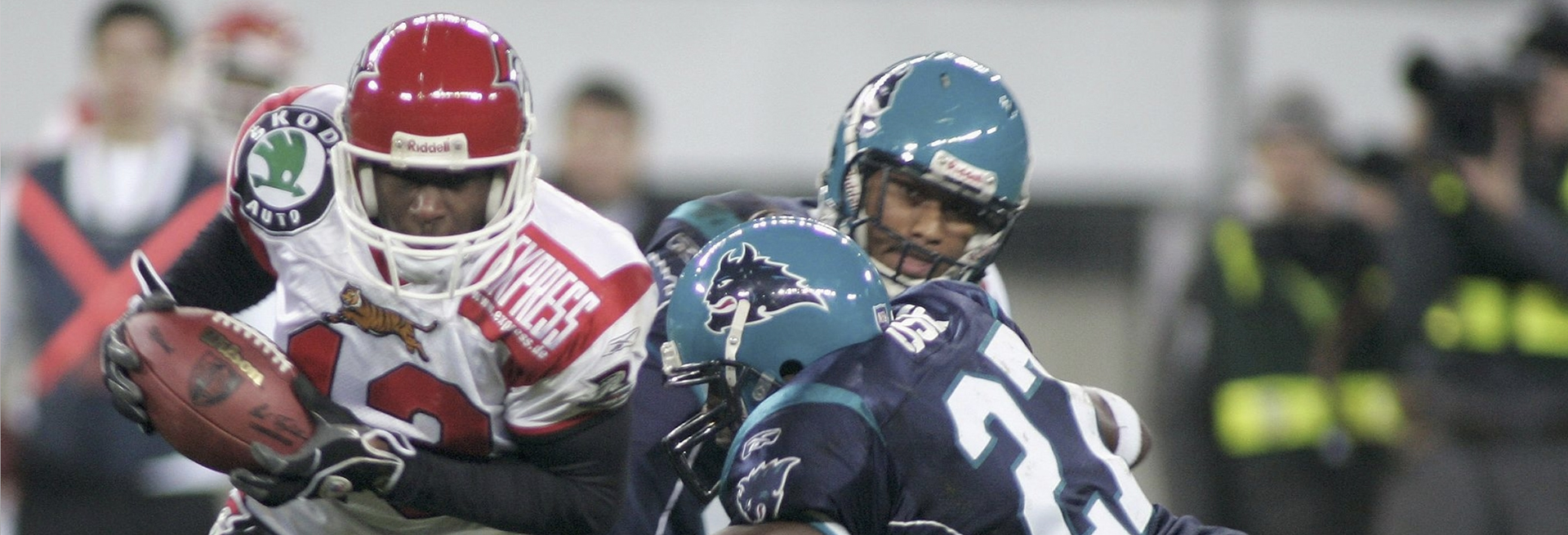Inspired by his time as an professional football player and athletic trainer, neuroscientist Claudius Osei is trying to understand how the brain influences behavior — and the body. For scientists who research the brain, it’s a controversial notion. But, his research could shed light on what makes elite athletics perform the way they do.
“Neuroscience that solely focuses on the brain is discounting the impact of the body in cognition, and that’s what I’m focusing on,” Osei said. For example, he said, the best football players aren’t necessarily the fastest or the strongest players. It takes special cognitive abilities to specify the perceptual information that leads to the desired outcome. “I’m interested in how the brain and the body solve those complex problems.”
Osei is a doctoral student working in the lab with Elan Barenholtz, Ph.D., an associate professor of psychology, member of the Center for Complex Systems and Brain Sciences in FAU’s Charles E. Schmidt College of Science, and member of the FAU Stiles-Nicholson Brain Institute. Recently, Osei was a runner-up in the Three-Minute Thesis Competition organized by FAU’s Graduate College.
Additionally, Osei was recently awarded the FAU Graduate Diversity Fellowship and is involved with the Brain Institute’s outreach program, ASCEND (Advancing STEM Community Engagement through Neuroscience Discovery) for middle and high school students in Palm Beach County. “I think it is important to encourage underrepresented communities to do science,” he said.
Before joining FAU, however, Osei was not a formally-trained scientist. In 1999, he relocated to the U.S. from Germany during his senior year of high school as part of the NFL Europe’s developmental football program. Afterward, he earned a scholarship to play college football at Florida State University, where he earned an undergraduate degree in business. After graduating, he played professional football for the NFL, including the New York Giants and Tampa Bay Buccaneers.
He found neuroscience after leaving the NFL to work as an athletic trainer. To better understand how to motivate his clients, he spent hundreds of hours poring over psychology research. In the process, he developed his theory to identify his client’s favorite childhood activities and apply similar movements to their training regimen. Eventually, he wanted to conduct more rigorous research, which led him to apply to the doctoral program at the Brain Institute.
Now, Osei studies the brain and body by coding neurological functionality into 3D models using a game engine called Unity. In traditional psychophysical experiments, humans are essentially playing a video game, he said. His experiments are replacing the human with a digital representation that performs various actions inside the software’s virtual world. Thus, Osei can identify the neural activities of the AI agent’s

brain during its behavior without restricting its movement to control the environment, like in traditional behavioral experiments. This involves creating a physical body for the agent, which he hopes will elucidate the importance of the entire nervous system in behavior.
“Imagine a basketball player taking a shot,” Osei said. That movement is not easily replicated, not just because of environmental disturbances, but also due to internal factors such as muscle fatigue and stress level, he said. “So, assuming the brain can simply give the same command to the body to repeat a specific behavior would lead to consistent errors in performance. Our peripheral and autonomic nervous systems play an intricate part in our behavior. They should therefore be treated as partners in cognition instead of passive executors of the brain’s instructions.”
“My research is for anybody with a brain,” Osei said. “If you wonder why you or other people behave in a certain way, we have to understand the cooperation between the brain and the body.”
